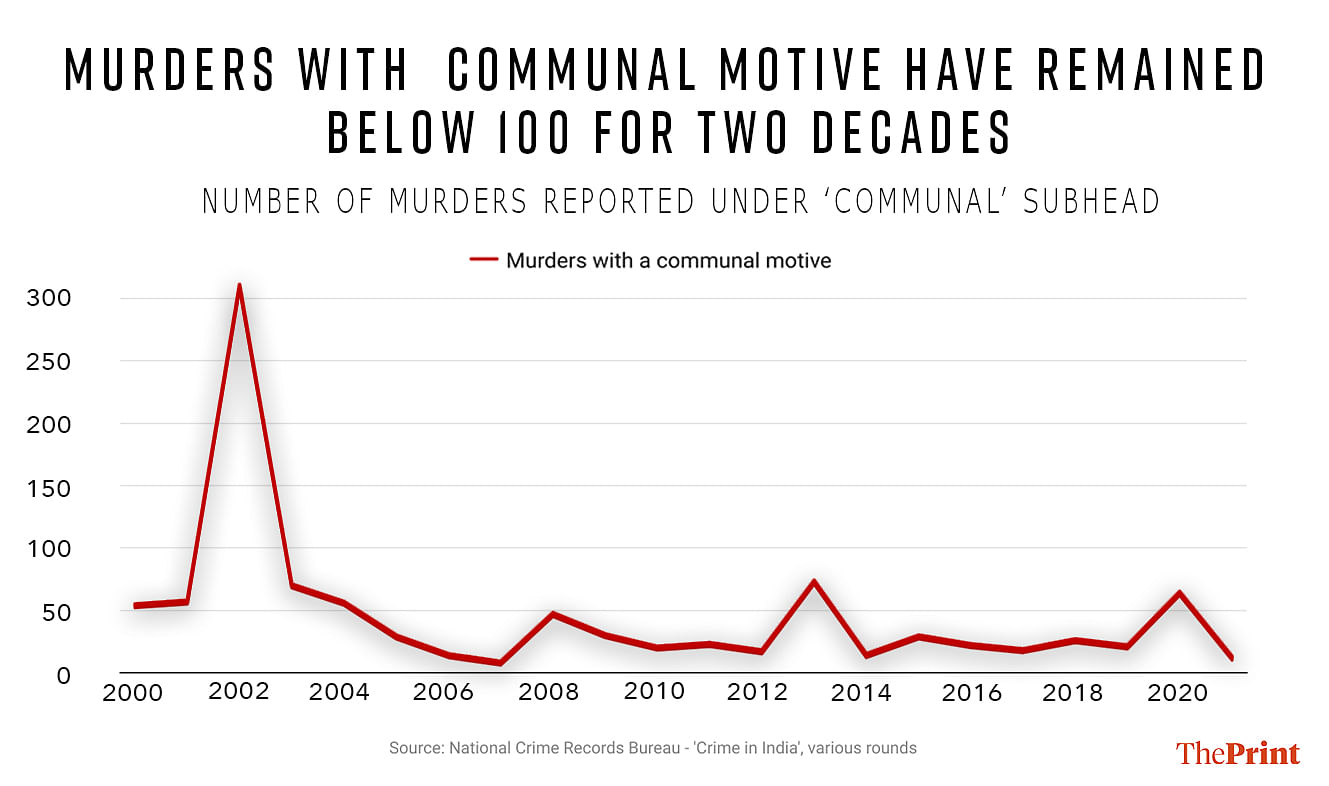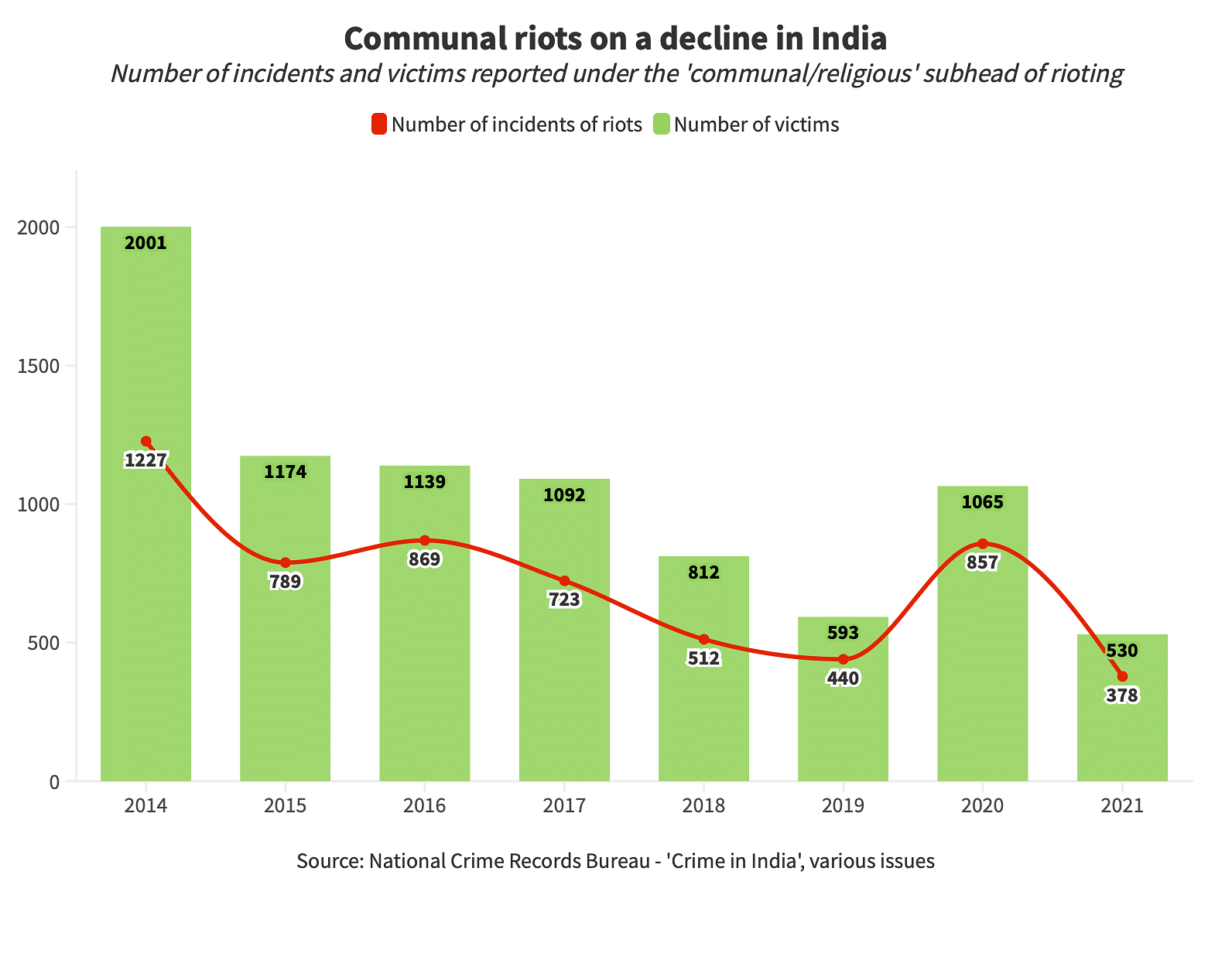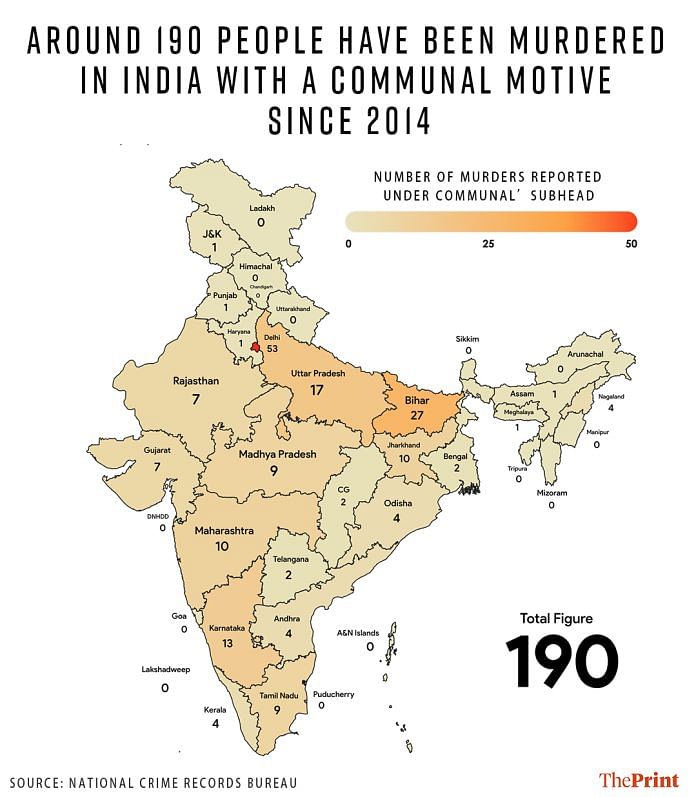New Delhi: India has seen murders attributed to communal causes drop by 12 percent in the last eight years of the Modi government as compared to the same period preceding it during the United Progressive Alliance (UPA) rule, according to the National Crime Records Bureau (NCRB) data.
Between 2014 and 2021, 190 murders with a communal motive were reported from across the country — a fall from 216 in the years from 2006 to 2013.
As for these communal killings in the last eight years, the maximum was reported in 2020 with 62 such cases. Incidentally, the year 2020 was marked by nationwide protests, including in Delhi where riots broke out in its Northeast suburbs, against the controversial Citizenship (Amendment) Act (CAA).
The eight-year cutoff was arrived at considering the NCRB annual data is available till 2021, the report of which was released by the Union home ministry in August last year. It is pertinent to note that the findings come at a time when Nuh in BJP-ruled Haryana is recovering from last week’s communal violence.
The maximum cases were reported from the state of Delhi with 53 murders having communal angle in the 2014-2021 period, according to the NRCB data. Earlier, Uttar Pradesh topped the list with 63 killings in the 2006-2013 period.
Further, if the data is considered from the year 2000 onwards, the toll was highest in 2002 with about 308 killings with communal motives. Gujarat topped the list with 276 cases that year.

Since then, the toll has never crossed 100 murders with a communal motive ever in a year. Barring 2013 (71) and 2020 (62), the number has never crossed 50 in any single year, the NCRB records show.
Also Read: Indian states with less than 10% multidimensional poverty doubled in 5 yrs, says NITI Aayog report
Methodology in collating riot data
For compiling its annual report, the NCRB makes an amalgamated dataset of all the cases reported by the police in a given year. Under the section of Unlawful Assembly, the NCRB has a section on rioting. This section further has a subhead called ‘communal’, for which data is available since 2014.
Till 2014, NCRB provided data under three heads — riots, unlawful assembly, and offences promoting enmity between groups — under one single category of ‘riots’. It started giving the data for these heads as well as others such as ‘offences promoting enmity between different groups’ separately from the next year.
This makes comparison with the numbers of the pre-2014 period nearly infeasible. Data for communal riots, therefore, is available from 2014 till 2021. However, information on murders with a religious or communal motive is available for a longer duration.
There is a caveat when it comes to data on riots — it does not measure the intensity of the incident. For example, in the 2020 Delhi riots, which claimed 53 lives, several hundred cases of communal rioting were registered.
Rioting cases and victims
Like the toll which has fluctuated in the last eight years, a surprise takeaway has been that the number of riot-related cases registered by the police across the country has also fluctuated under the Modi rule.

Consider these numbers: In 2014, India reported about 1,227 incidents of communal riots with 2,001 victims. It dropped to 789 incidents and 1,174 victims in the next year. While the number of rioting incidents rose to 869 in 2016, the people affected by riots were 1,139.
There were 512 rioting cases with 812 victims in 2018. The graph came down to 440 rioting incidents and 593 victims in 2019, but rose sharply in 2020 when the police recorded 857 cases and put the number of victims at 1,065.
The year 2021 was marked by 378 riot cases — the lowest since 2014 — while official records put the number of victims at 530.
(Edited by Tony Rai)
Also Read: Did UP economy do better under Akhilesh than Yogi? A data-check on state’s $1-trillion ambition



